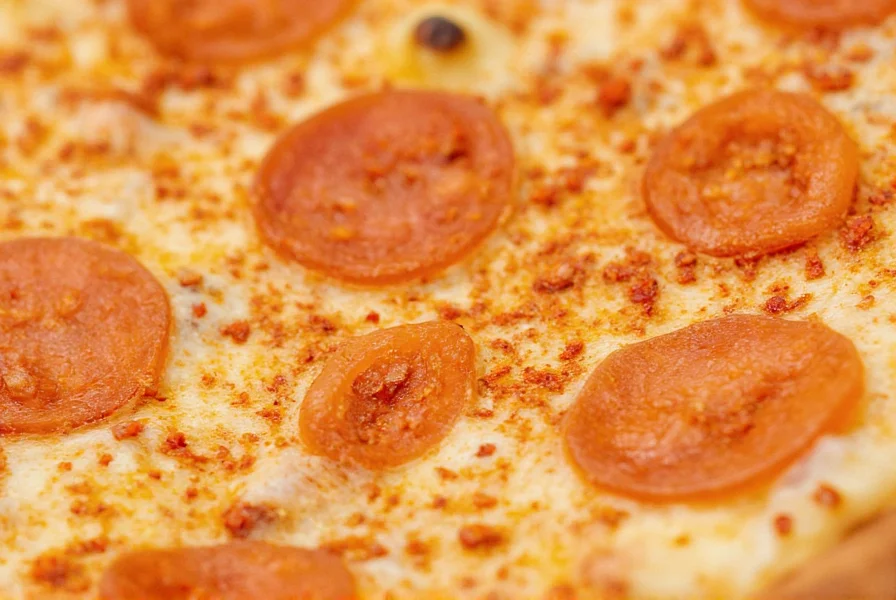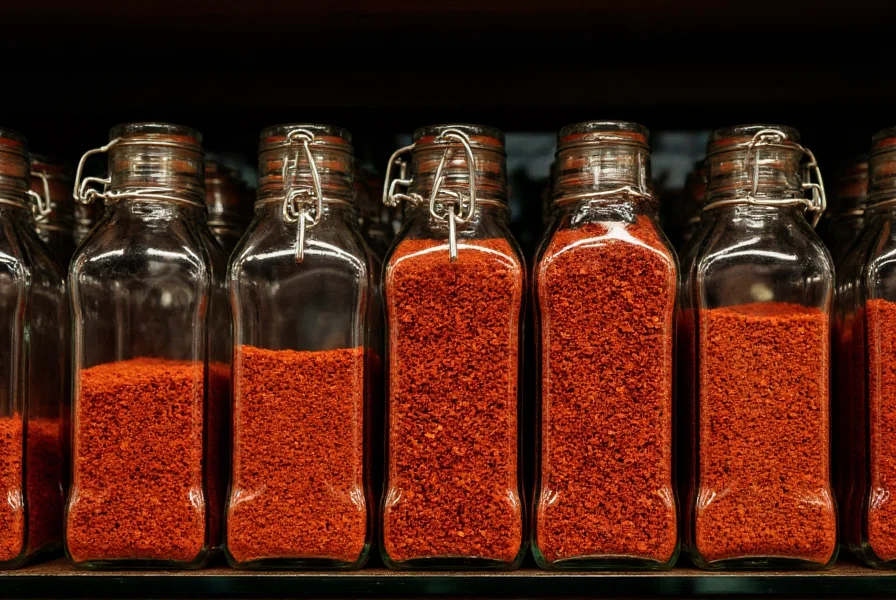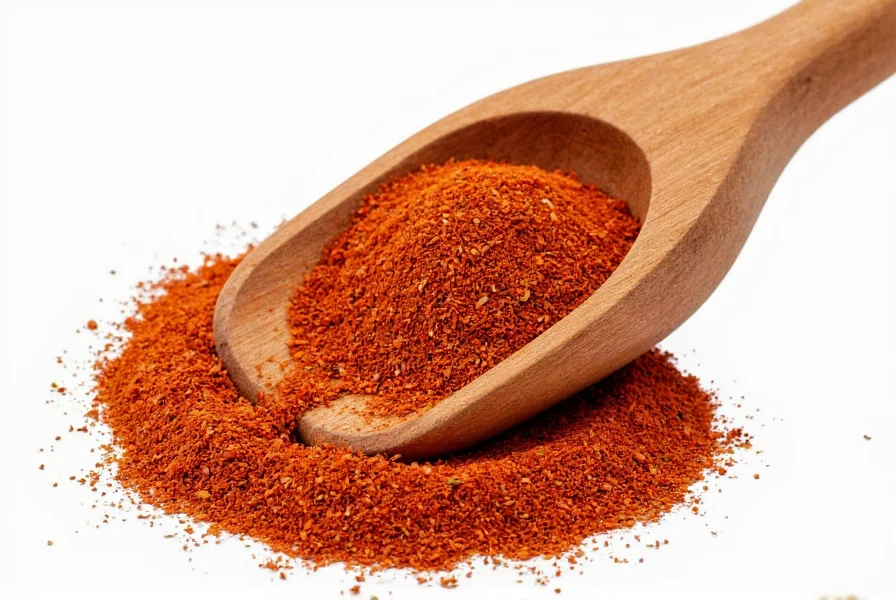What Exactly Are Crushed Red Pepper Flakes?
Crushed red pepper flakes consist of dried, broken pieces of various chili peppers, most commonly cayenne peppers. The flakes include both the pepper's flesh and seeds, which contribute to their characteristic heat level. Unlike finely ground chili powder, these flakes maintain a coarse texture that provides both visual appeal and a more controlled heat distribution in cooking.
Commercially produced crushed red pepper flakes typically contain a blend of peppers including cayenne, ancho, and sometimes other varieties. The specific mix varies by brand, creating subtle differences in flavor profile and heat intensity. When examining crushed red pepper flakes nutrition facts, you'll find they're low in calories but rich in capsaicin—the compound responsible for their heat and potential health benefits.
Crushed Red Pepper Flakes vs. Similar Products
Many home cooks confuse crushed red pepper flakes with other spice products. Understanding these differences is essential for proper use of crushed red pepper flakes in recipes:
| Product | Composition | Heat Level | Best Uses |
|---|---|---|---|
| Crushed Red Pepper Flakes | Dried, coarsely ground chili peppers (usually cayenne) | Medium to high (30,000-50,000 SHU) | Pizza, pasta, marinades, finishing dishes |
| Chili Powder | Blend of ground chilies plus cumin, garlic powder, oregano | Low to medium (varies widely) | Chili, tacos, seasoning blends |
| Cayenne Pepper | Fine powder of pure cayenne peppers | High (30,000-50,000 SHU) | Baking, spice blends, sauces requiring smooth texture |
Culinary Applications and Flavor Profile
Crushed red pepper flakes deliver a complex flavor beyond simple heat. They provide a bright, slightly fruity note with earthy undertones that develops differently depending on when to add crushed red pepper flakes during cooking. Adding them early in the cooking process creates a more integrated, mellow heat, while sprinkling them at the end delivers a sharper, more immediate kick.
Professional chefs often use crushed red pepper flakes in these applications:
- Italian cuisine: Essential for arrabbiata sauce, pizza toppings, and pasta dishes
- Mediterranean cooking: Adds depth to olive oil-based dressings and roasted vegetables
- Breakfast dishes: Sprinkled on avocado toast or eggs for a flavor boost
- Marinades: Combined with olive oil and herbs for meats and vegetables

Substituting Crushed Red Pepper Flakes
When you need crushed red pepper flakes substitute options, consider these alternatives based on your specific needs:
For similar texture and heat: Use freshly cracked black pepper mixed with a pinch of cayenne powder. The black pepper provides texture while the cayenne delivers heat. For recipes where appearance matters less, cayenne pepper powder works but lacks the visual appeal and textural contrast.
For milder flavor: Aleppo pepper flakes offer a similar texture with less heat and more complex fruitiness. For those avoiding nightshades entirely, crushed dried ginger with a touch of black pepper can provide texture and warmth, though the flavor profile differs significantly.
Storage and Freshness Tips
Proper storage significantly extends the shelf life of crushed red pepper flakes. Store them in an airtight container away from light and heat sources. When stored correctly, they maintain optimal flavor for 1-2 years. Exposure to humidity causes clumping, while heat accelerates flavor degradation.
To test freshness, examine both appearance and aroma. Fresh flakes should have vibrant red color and a sharp, clean scent. Dull color or musty odor indicates they've passed their prime. For best storage practices for crushed red pepper flakes, consider dividing larger quantities into smaller containers to minimize air exposure each time you use them.

Buying Guide: Selecting Quality Crushed Red Pepper Flakes
When purchasing crushed red pepper flakes, look for products with minimal additives—ideally containing only dried peppers. Higher quality brands often specify the pepper varieties used and may indicate heat level. Check for consistent flake size, vibrant color, and absence of moisture or clumping.
Specialty stores often carry artisanal versions made from specific pepper varieties like guajillo or pasilla, which offer unique flavor profiles beyond standard supermarket options. For authentic crushed red pepper flakes for Italian cooking, seek products labeled as "calabrian" or "peperoncino" which often feature regional Italian peppers.
Frequently Asked Questions
Are crushed red pepper flakes the same as chili flakes?
Yes, crushed red pepper flakes and chili flakes generally refer to the same product—dried, coarsely ground chili peppers. The terms are used interchangeably in most culinary contexts, though regional variations in pepper types may create subtle differences in flavor and heat.
How hot are crushed red pepper flakes compared to other spices?
Crushed red pepper flakes typically measure between 30,000-50,000 Scoville Heat Units (SHU), placing them in the medium to high heat range. They're significantly hotter than paprika (500-1,000 SHU) but milder than pure cayenne powder (30,000-50,000 SHU) due to potential blending with milder peppers in commercial products.
Can crushed red pepper flakes go bad?
While they don't technically spoil, crushed red pepper flakes lose potency and flavor over time. Properly stored in an airtight container away from light and heat, they maintain optimal quality for 1-2 years. Signs they've degraded include faded color, musty odor, or clumping from moisture exposure.
What's the difference between crushed red pepper and cayenne pepper?
Crushed red pepper consists of coarsely ground dried chili peppers (often including cayenne among other varieties), while cayenne pepper is a fine powder made exclusively from ground cayenne peppers. Crushed red pepper provides texture and visible flecks, whereas cayenne delivers more consistent heat distribution without texture.
How can I control the heat level when using crushed red pepper flakes?
To control heat, add crushed red pepper flakes at different cooking stages. Adding them early creates milder, integrated heat as the capsaicin distributes throughout the dish. Adding them toward the end delivers sharper, more immediate heat. You can also remove seeds before crushing for less heat, as capsaicin concentrates in the seeds and inner membranes.











 浙公网安备
33010002000092号
浙公网安备
33010002000092号 浙B2-20120091-4
浙B2-20120091-4